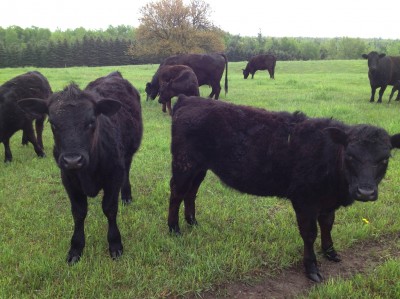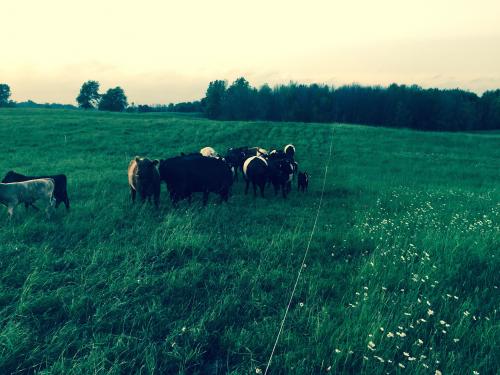Do Pasture Management and Nutrient Management Go Hand in Hand?

The answer to that question is a resounding yes! A grazier can affect the manner that nutrients are distributed in a pasture simply managing the grazing animals. All too often animals are placed in a given area of land, and grazed on that land in what is termed “continuous grazing.”
Figure 1 (below) shows cattle being continuously grazed; this is where animals are left in a designated area until the end of the grazing season, or until they run out of forage. This type of grazing management will lead to poor nutrient distribution from urine and feces, and will also result in the lowest utilization rate of pasture forages.
Figure 1: Continuous gazing. Photo by Kable Thurlow
Proper grazing can return a significant amount of nutrients back to the field by way of nutrient cycling through the grazing animals urine and feces. A producer can greatly affect the distribution of those nutrients, simply by the method in which they manage the grazing animals.
Research has shown that if grazing animals are forced to travel more than 600 to 900 feet to a water source, they will do so as an entire herd, versus going as an individual animal. When an entire herd goes to water at the same time, there is a higher chance that some animals maybe pushed away from the water and not allowed to drink, thus reducing animal performance due to insufficient water consumption.
Also, if the grazing animals have to walk in an alley to get to the water source, 15 to 20 percent of the manure is dropped in the alley and not in the pasture where it would be better utilized.
Figure 2: Rotational grazing. Photo by Kable Thurlow
Key Points:
- There are three basic types of grazing: 1. Continuous, cattle are left in a paddock for the entire grazing season (see Figure 1), 2. Rotational grazing, cattle are moved every 10-90 days (see Figure 2), and 3. Management Intensive Grazing, where animals are moved every 1-9 days (see Figure 3)
- Management Intensive Grazing gives you the best forage utilization and uniform nutrient dispersal
- Move the water source with the cattle, keep it within 600-900 feet of the paddock
- Cows will drink 15 percent more if the water source is in the grazing paddock
- 15 to 20 percent of the manure will be dropped in lanes and alley ways if they have to walk to water
- The average meat animal recycles 70 to 90 percent of the nutrients back to the pasture in the form of urine and manure

Figure 3: Management intensive grazing, cattle being moved daily. Photo By Kable Thurlow
Management Intensive Grazing (MIG) focuses on moving the cattle to fresh paddocks based on the amount of forage available in an area. The water and mineral sources also move with them to each new paddock. Producers can use this type of grazing management to not only benefit the distribution of nutrients in manure and urine, but also to better utilize, sustain, and rebuild the natural resources they have available.







